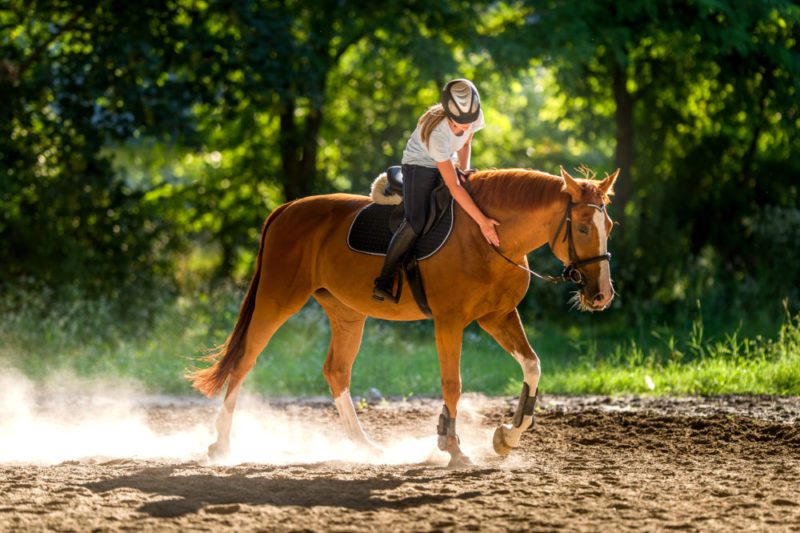Correct saddle placement will make your horse happier and more comfortable, and may even help resolve some of those unwanted “cranky” behaviors!
A horse is standing quietly in cross-ties, when the rider appears with a saddle. The horse’s ears go back, she starts biting at the cross-ties, swishing her tail and shuffling around. The rider reprimands her for being cranky and misbehaving. Clearly, however, the horse has previously experienced discomfort during saddling and has learned to react with unwanted behaviors. In this article, we’ll look at how saddle placement can cause horses pain, and what to do about it.

- Throwing a saddle on a horse can cause shock and discomfort. Always be gentle when saddling him.
- Placing the saddle too far forward, on top of the shoulders instead of behind the edge of the shoulder blade, or scapula, creates discomfort and mobility problems.
- A too-narrow saddle placed on top of the shoulders pinches the trapezius muscles, preventing the horse from moving her front legs freely. It restricts normal movement and can pinch the reflex point on the withers where a stallion bites a mare during breeding to immobilize her and cause her pelvis to open. This results in hollowing of the rider’s back and reduced gait regularity.
- A saddle too wide in the gullet slides backwards to rest in the lowest point of the horse’s back. If the gullet has not been properly measured to fit the horse, pressure is created on the ligaments running down each side of the spine, and it may rest on top of the spinal processes. Constant rubbing in this area can result in lumps or swelling and/or cause permanent damage, indicated by white hairs in the affected areas.
-

Most often, you will find white hairs on the left side of the horse’s withers, which indicate a gullet plate that was too tight and incorrectly fitted, and tree points that were also too tight, incorrectly angled or forward-facing. Photo courtesy of Dieter Busse. Tighten the girth just enough to keep the saddle from slipping as the horse is led out to ride. Then, before mounting, tighten the girth one hole at a time on either side while walking your horse for a few minutes. Avoid over-tightening by using your hand – it should slide fairly easily between the horse and the girth.
- A saddle placed too far forward will put the rider’s balance point too far back. This distributes her weight to the back of the saddle, into a chair-seat position, putting too much pressure on the horse’s lumbar area. The rider cannot use aids effectively, and the horse is pushed out of balance and into tension. This can create an instinctive flight response. When a horse feels out of balance, his adrenaline kicks in, resulting in rushing, high-headedness, a refusal to turn or bolting.
- A saddle positioned too far back tends to sit on the “floating ribs”. This is the “bucking reflex point” – pressure on these unsupported ribs causes considerable discomfort, which can lead to bucking as the horse tries to alleviate the pressure.
- A saddle that is too long will also put unwanted pressure on these “floating ribs”.
A certified Equine Ergonomist or Saddle Fitter can assess the correct fit and placement of your saddle. Your horse will be happier and more comfortable, and you may find that some of those unwanted “cranky” behaviors mysteriously improve or even vanish!








